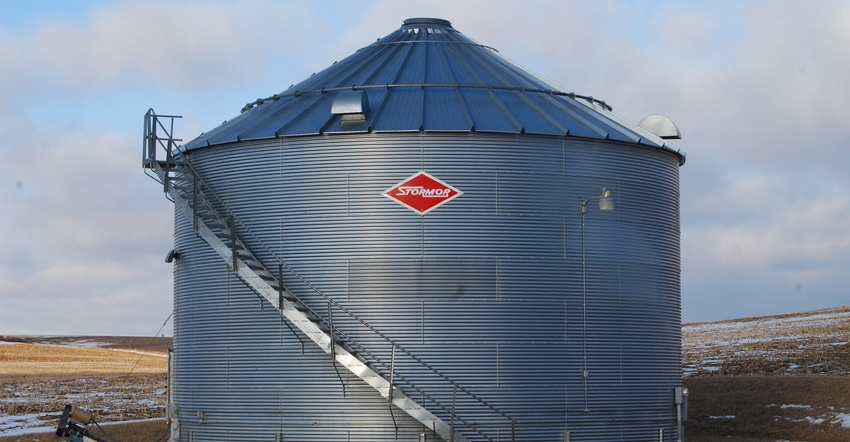March 10, 2020

The prospects for large 2020 U.S. planted corn and soybean acres are strong after a record 19.61 million acres of prevented planting in 2019. At its recent Ag Outlook Conference, USDA released forecasts indicating corn will grow to 94 million planted acres and soybeans to 85 million acres nationwide this year. The past couple of months have been brutal for commodity crop prices with good South American growing conditions followed by the global concerns for the spread of the coronavirus.
Projected spring prices for corn
During February, the December ’20 corn futures contract traded in an 18½ cent range and averaged $3.88 per bushel. This simple average of December corn futures in February is recognized as the 2020 spring-projected price for crop insurance. It’s used to determine the revenue guarantee for the spring-planted corn crop. Combined with a relatively low volatility factor of 15% means lower crop insurance premiums for 2020 as compared to 2019, assuming the same level of coverage and unit structure is elected.
Producers using Revenue Protection crop insurance with a reasonable corn breakeven price should be comfortable in pricing a portion of their new crop bushels when futures trade above this $3.88 level. That’s because revenue protection guarantees their APH insurance bushels times this price, assuming the crop is planted, and the producer uses good farming practices. If the harvest price (futures price simple average in October) is higher than $3.88, the revenue guarantee is adjusted higher, and any shortfall of sold bushels will reflect this higher price.
Setting corn futures price objectives
The high price for a December ’20 corn futures contract last fall was $4.11½ on Oct. 21. Expect this price level to provide strong resistance should futures prices rally this spring. Consider establishing both time and futures price objectives for making new crop sales. A reasonable time frame could be every two weeks from early April through mid-June. Reasonable price objectives could be incremental sales every 5 cents, beginning at $3.90 through $4.15 per bushel. If the market rallies above $4.15, using futures hedges or buying put options should be considered.
Soybean spring-projected prices
During February, November ’20 soybean futures traded around 27 cents and averaged $9.17 per bushel, which becomes the 2020 spring-projected price. This will be used to determine the revenue guarantee for the spring-planted soybean crop. Combined with a near-record-low volatility factor of 12%, expect much lower crop insurance premiums for 2020 as compared to 2019, assuming the same level of coverage and unit structure is elected.
A producer using Revenue Protection crop insurance will likely have breakeven prices higher than this $9.17-per-bushel level. They’ll probably want to wait for higher November ’20 soybean prices before aggressively selling a large number of new crop bushels.
Set bean futures price objectives
Fortunately, several opportunities last fall and early winter offered opportunities to price some soybeans above $9.50 per bushel. The winter high price for November ’20 soybean futures was $9.82¾ on Jan. 2. Expect this price level to provide strong resistance should futures prices rally this spring or summer. This rally would likely be due to delayed planting, prospects for fewer soybean planted acres and, perhaps, an increase in soybean export demand.
Consider establishing both time and futures price objectives now, like every three weeks from mid-May through mid-July. Reasonable price objectives could be incremental sales every 10 cents beginning at $9.50 through $9.80 per bushel. If the market rallies above $9.80, the use of futures hedges or buying put options should be considered.
Create marketing plan
A written, preharvest marketing plan provides the discipline to implement it. Once written, give this plan to your commodity broker and grain merchandisers. Also, consider sharing this written plan with your ag lender and other business partners. Use these preharvest sales to generate fall and winter cash flow needs, and avoid excessive bushels being stored commercially.
Producers who preharvest-market a portion of their bushels using spring futures price rallies above the crop insurance projected prices have been well rewarded in recent years. Spring projected prices exceeded the harvest prices for corn in six out of the past six years and five out of six years for soybeans.
A return to larger 2020 U.S. planted acres and more normal weather will likely mean a much weaker basis as compared to the 2019 crop. This means basis will likely weaken as harvest approaches and be widest the first half of the harvest. Basis should then strengthen the last half of harvest and remain strong through December.
Consider the use of on-farm storage for improved harvest efficiency and to reduce corn drying and shrink costs. On-farm storage also increases the chances of capturing a much stronger basis postharvest, as processors bid up to obtain bushels already in storage.
The potential exists with more abundant 2020 crops for futures carry to exist. That’s the difference between, say, the December corn futures as compared to the July futures. A producer who already “locked-in” higher futures prices in the spring could then work with a broker or merchandiser as harvest approaches to “sell the carry” and capture perhaps 30 cents per bushel or more using their on-farm storage.
Farmers will likely plant 3 million to 4 million more corn acres and 7 million to 9 million more soybean acres in the U.S. in 2020. If this occurs, 2020 could be the year to be more aggressive with new crop sales. Also, pay attention to the 2019 crop condition if you have corn or soybeans stored on-farm. With varying temperatures and moisture levels, farmers are sacrificing grain quality by leaving it in the bin. Farmers need to have a futures price objective for both old and new crops instead of sitting on stored bushels.
Be proactive during uncertain times
Planting time is a busy time, but don’t let that cause you to miss opportunities for preharvest crop marketing. Develop a written marketing plan that will be executed between now and November. Here are some helpful tips:
Understand futures price seasonals, which favor making spring sales.
Calculate 2020 breakeven prices using APH yields.
Anticipate having a more normal basis next fall, winter and spring when you typically deliver your cash bushels.
Use revenue protection crop insurance and separate delivery from non-delivery bushels.
Anticipate your farm’s cash flow needs next fall and winter.
Avoid putting excessive unpriced bushels in commercial storage at harvest.
Johnson is an ISU Extension farm management specialist. Contact [email protected].
About the Author(s)
You May Also Like






